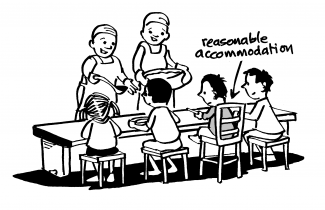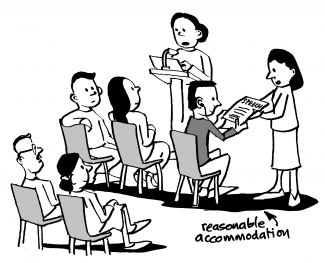Reasonable accommodation is defined as “necessary and appropriate modification and adjustments, not imposing a disproportionate or undue burden, where needed in a particular case, to ensure to persons with disabilities the enjoyment or exercise on an equal basis with others of all human rights and fundamental freedoms.”
Reasonable accommodation is about providing what is required to ensure everyone can participate on an equal basis with others. It is also about making changes to what you are doing already. For example, if you are renovating premises or building an emergency shelter, putting in a ramp would be a reasonable accommodation; or if you are developing DRR IEC materials, producing them in alternative/multiple formats for persons with diverse disabilities is also a reasonable accommodation.
Often, reasonable accommodations cost little or nothing and can be simply applied. Consult with persons with disabilities when planning for a reasonable accommodation in your DRR programmes.

